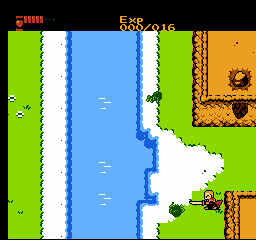Here's how I do some really basic perf testing on my NES game, Super Sunny World 🌞
I can enable a "Frame Line" which draws a line of "white" at the end of the Game Loop. If that line goes past the bottom of the screen, that would result in a lag frame! #nesdev
I can enable a "Frame Line" which draws a line of "white" at the end of the Game Loop. If that line goes past the bottom of the screen, that would result in a lag frame! #nesdev
This works because while FRAME 1 is drawing, line by line from the top of the screen downward, FRAME 2 is being calculated. So the longer FRAME 2 takes to update, the lower on screen the line will be.
But you may be wondering: I didn't think the NES could draw arbitrary lines like that! You're right. The "line" isn't actually a "line". Instead I change to color of the rendering (using something called an "emphasis bit") for a set time creating the illusion of the line.
Noah's Ark (NES) did this to create this water effect. In this case though, they don't turn the emphasis bit off, so the whole bottom of the screen looks "brighter". 

What makes this extra cool, is that it works on real hardware, so I can profile performance without any debugger/emulator tools.
@UnrollHelper unroll
• • •
Missing some Tweet in this thread? You can try to
force a refresh










